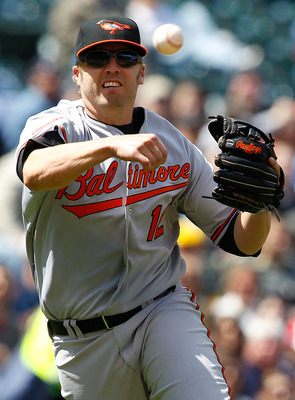The list I used in that column were third basemen who recorded at least -18 runs expected defensively. Below the list is paired to how many games on average it took to have one negative run. For instance, the worst number we see on the list is Ryan Braun who on average gave up a run for the Brewers every 3.2 games he played at third. Amazingly, Mark Reynolds was twice as good as Braun. Think about that for a second.
Not including Reynolds, this is a list of 14 players. Five of them (Greg Norton, Jim Presley, Joel Youngblood, Gary Sheffield, and Ryan Braun) were effectively moved off third base to less demanding positions. The remaining nine all improved. That list is presented below:
Games Per Run Given Greg Norton 6.32 Jim Presley 6.65 Joel Youngblood 5.57 Toby Harrah 6.05 Fernando Tatis 6.68 Edwin Encarnacion 6.23 Mark Teahan 5.33 Joe Torre 6.44 Ty Wigginton 5.54 Gary Sheffield 4.29 Ryan Braun 3.2 Mark Reynolds 6.33 Bob Aspromonte 8 Todd Zeile 8.5 David Wright 7.89
The Toby Harrah number is actually fudged a little bit. He played 156 games and had a 0 expected runs value, meaning that he was measured as perfectly average in that second year. Mark Teahan improved the least with a 7.27 games per lost run value.
Year 1 Year 2 Toby Harrah 6.05 156 Fernando Tatis 6.68 11.38 Edwin Encarnacion 6.23 10.2 Mark Teahan 5.33 7.27 Joe Torre 6.44 19.5 Ty Wigginton 5.54 15.25 Bob Aspromonte 8 75 Todd Zeile 8.5 37.3 David Wright 7.89 22.14
If you use this group as a range of possible improvement for Mark Reynolds' defensive metric, you have the following:
Mean value: -4 runs over 150 games at third
Median value: -8 runs over 150 games at thirdIf history is any indication of Reynolds' future performance, the outcomes range from below average to poor. Couple that with the same offensive performance as last year's and you get someone who is a little above average. I think we all can live with that.

